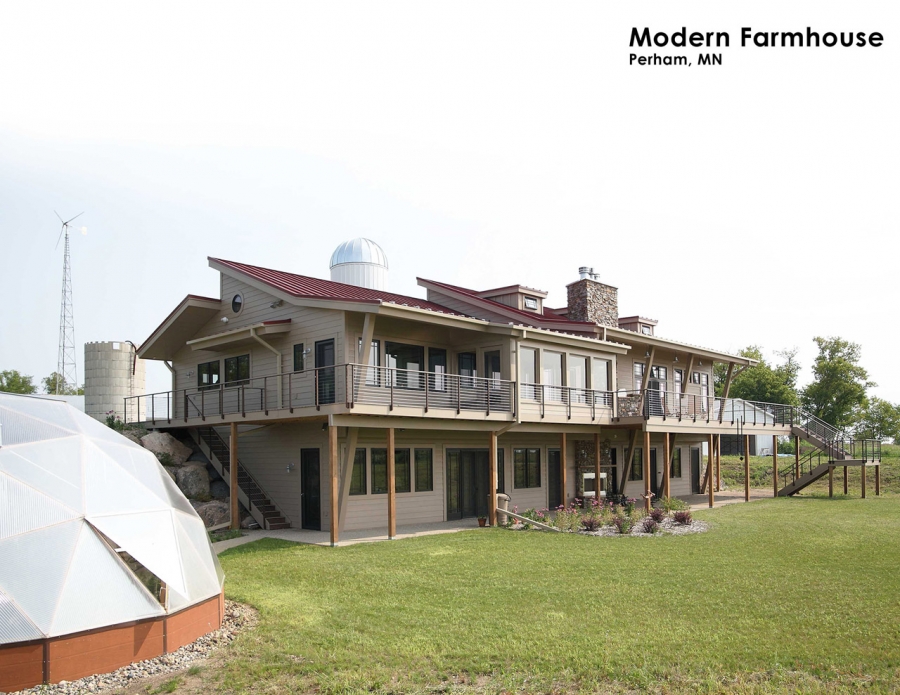Modern Farmhouse Plans
An energy-efficient, ADA-compliant farmhouse incorporates wind power and geothermal heating. Architect Jereme Smith explains how his architectural firm met the clients' needs for a sustainable, accessible retirement home.
 Image courtesy of Craig Caulfield.
Image courtesy of Craig Caulfield.
Nestled on 160 acres in northern Minnesota, this project was commissioned as a dream retirement home by clients who grew up in farm and rural settings. The clients requested a two-level home that spoke in the farmhouse vernacular. The house needed to adequately serve not only the two primary residents but also to expand for larger family gatherings, so the plans included a public ground floor and a more private lower level. The house also needed to be ADA-compliant and to provide wheelchair access, so an elevator is housed within the gleaming grain silo and the house lacks thresholds throughout. The remaining, relatively straightforward program was enhanced by the clients' progressive thinking in terms of energy efficiency.


The residence, by Chicago-area full-service architectural firm Design Insight, boasts near self-sufficiency via several interconnecting solutions. A large wind turbine, erected as a pre-project to the house, and a geothermal system are in place. Passive cooling and heating play roles as well. With the rear two-thirds of the home oriente to face due south, it collects maximum sun in fall, winter, and spring; the stained concrete floors hold that energy as a two-level, thermal mass. The farmhouse can also open on the east and west facades, which creates an elongated breezeway in the warmer months. The remaining front one-third of the home stayed on the orthogonal grid, aligning with existing farm buildings.
The clients were also interested in using eco-friendly processes and materials, like bamboo cabinetry, recycled resin panels, etc. Wood and stone, as seen in the knotty pine ceilings and stacked stone wall, were sourced locally. The stacked stone wall acts as a spine through the center of the home: it erodes as it progresses to the rear of the home and makes space for closets, built-ins, a stairway, counters, fireplaces, and, finally, an outdoor grill. The building itself also works with the gradual sloping site, thus providing the clients with a walk-out basement to round out their wish list for this contemporary farmhouse. Design Insight worked with local architects BHH Partners, with Tomlinson & Sons acting as general contractor and builder.



Jereme Smith
Smith obtained his master's degree in architecture from the University of Illinois at Champaign, IL. During his tenure, he won many accolades, receipt of two fellowships, & the opportunity to live abroad in France for a year. Prior to founding Design Insight Inc. in 2002, Jereme worked for a variety of prominent firms. Most notably, Kenyon & Associates Architects, Techline Inc, & Osterhaus + McCarthy LLC. He's won many awards including the Chicago 'Key to the Future' housing competition & the New York Humanscale office design competition.
Jereme has been published in various publications like the Sun Times, Chicago Home magazine, & I4 Design. His work has been displayed at the W Hotel through the IDSA, at the Art Museum of Virginia for the C2C eco-home exhibit, & even a fashion show for wearable architecture.
Smith has his architectural license & is also a member of the Association of Licensed Architects(ALA).
Find him on facebook Website: www.DIIarchitecture.com/















